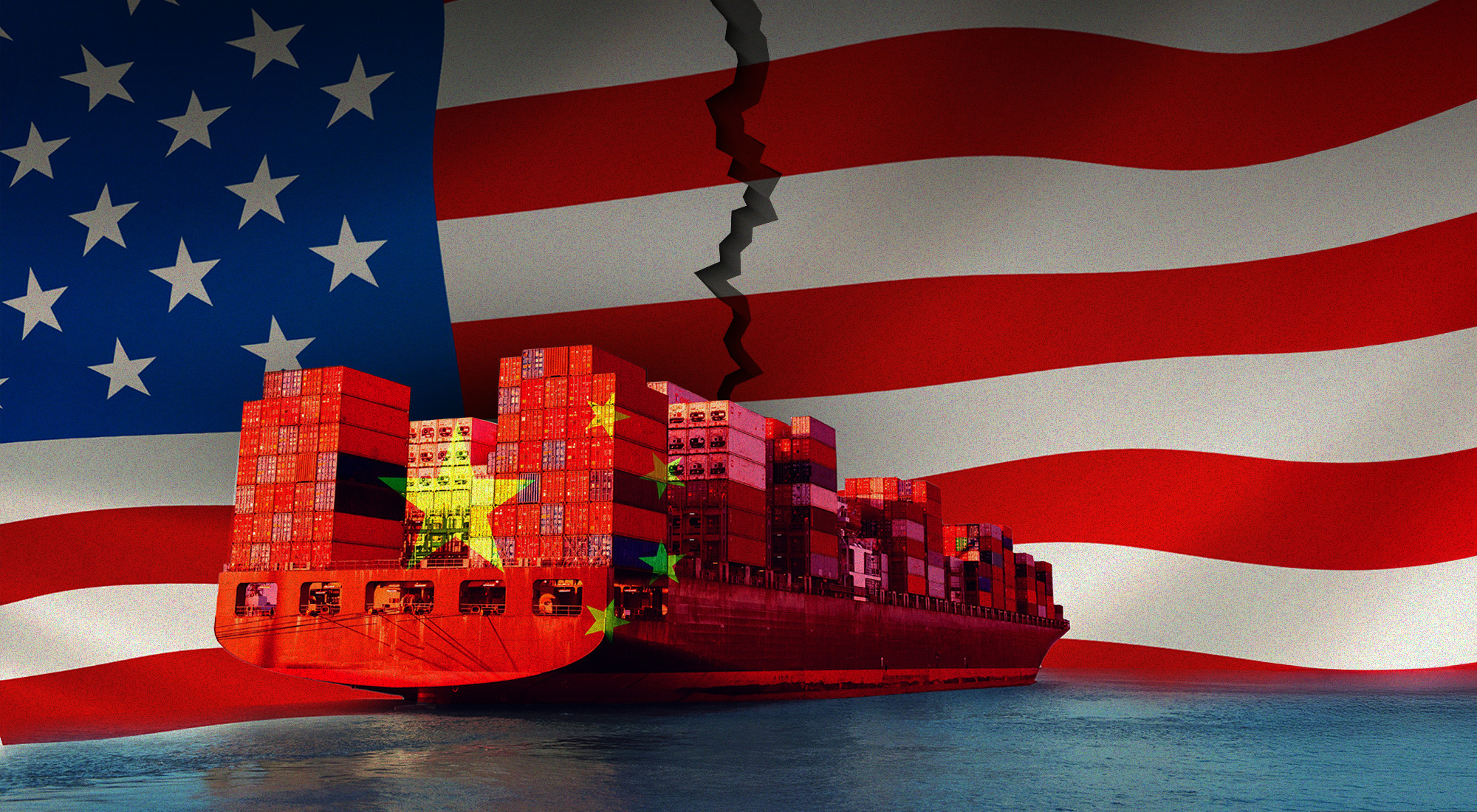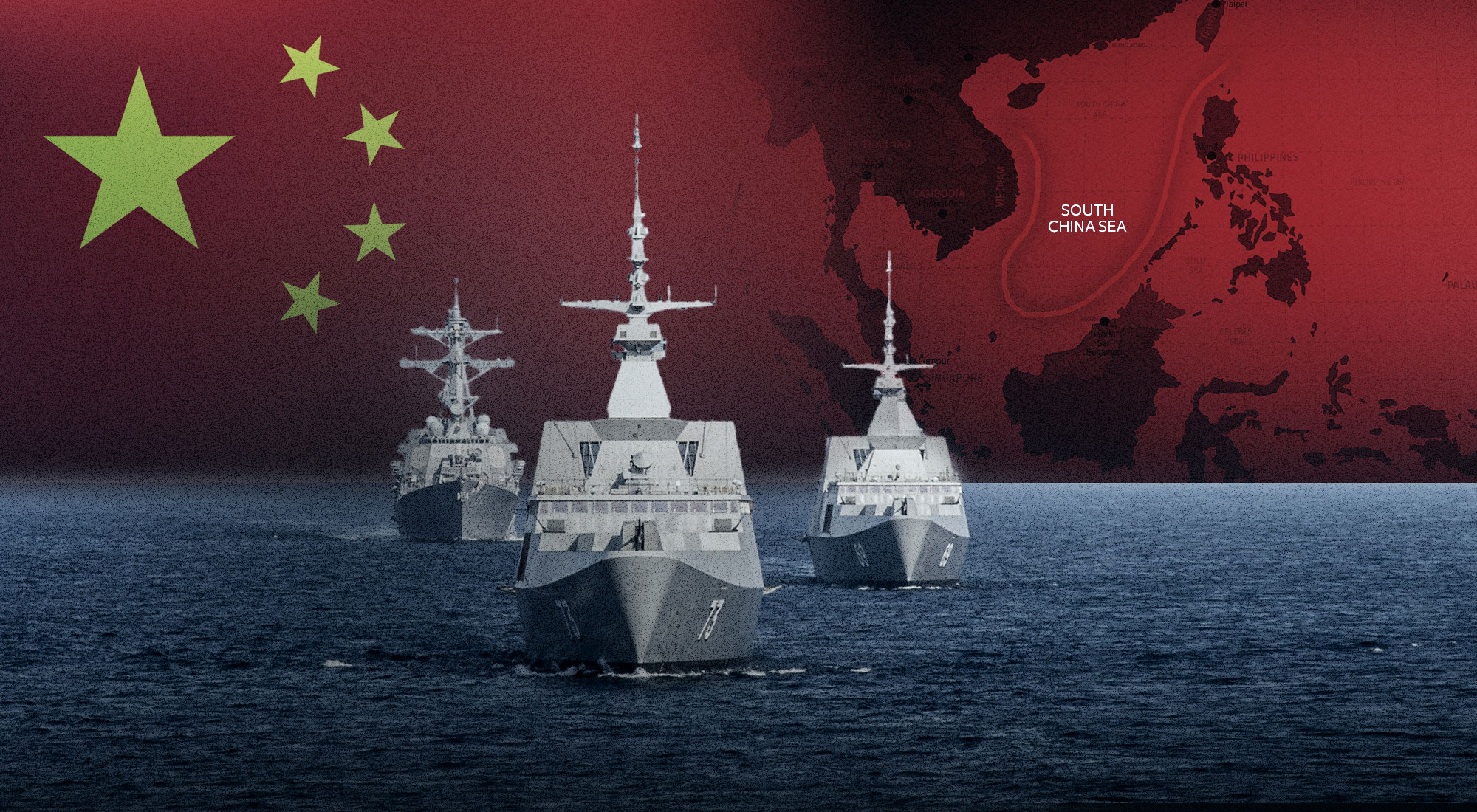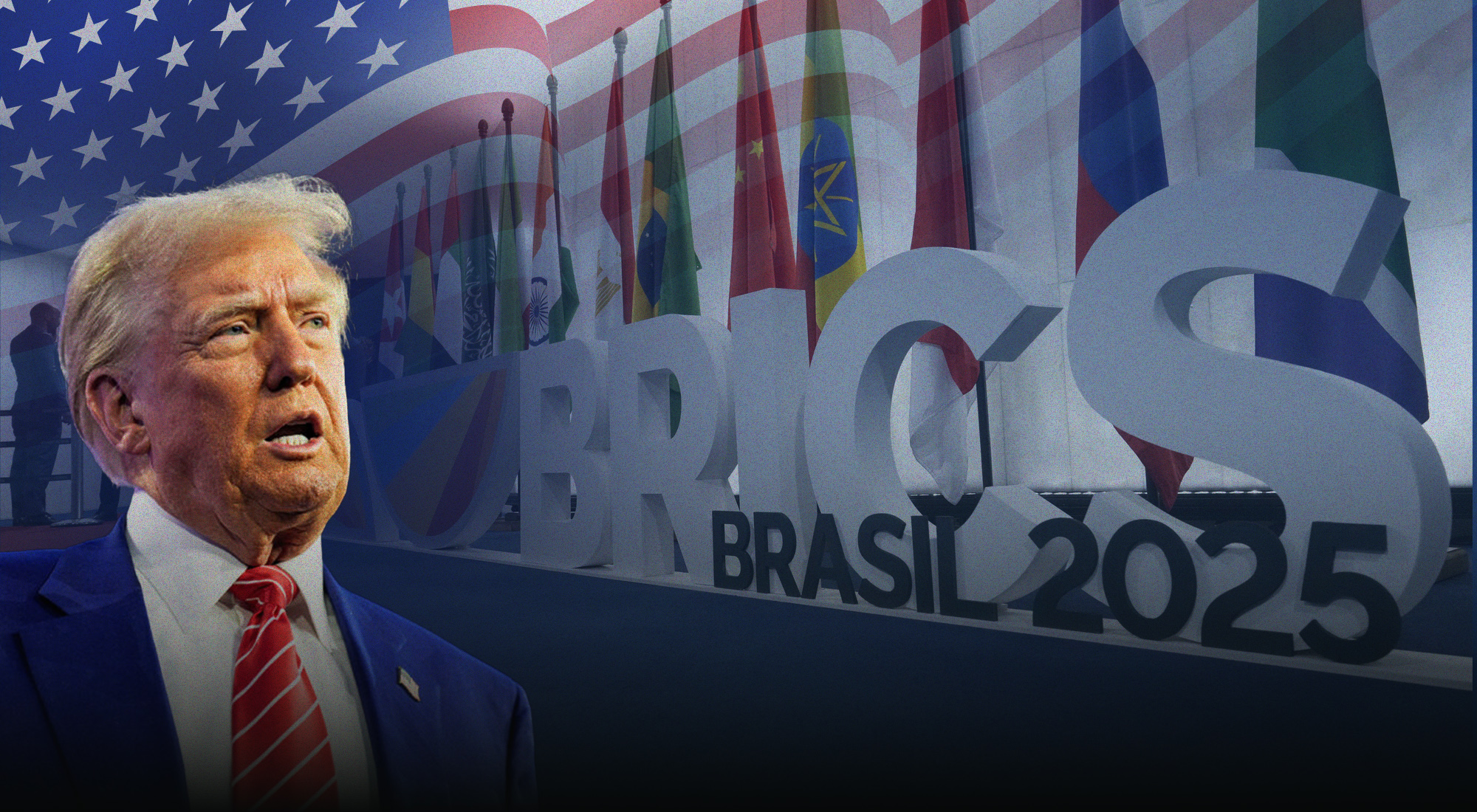The escalating trade wars between China and the United States (U.S.) represent a significant chapter in the evolving landscape of global commerce, shaped by historical events and contentious economic relations. This insight explores how U.S. tariffs on Chinese goods, aimed at addressing trade imbalances and intellectual property theft, have triggered significant economic repercussions for China and its global trading partners. It examines the U.S. tariffs’ objectives, their impact on China’s manufacturing and technology sectors, and China’s strategic responses to mitigate these effects. The broader implications include shifts in global trade dynamics, increased protectionism, and the role of international organizations like the World Trade Organization (WTO) in mediating these tensions.
Overview of the U.S.-China Trade Wars
What are the key historical events that have led to the current trade war between China and the U.S.?
The current trade war between China and the U.S. can be traced back to a series of pivotal historical events, particularly during Donald Trump’s first term as president. The Trump administration marked a significant shift in U.S. foreign policy, characterized by his vehemently critical stance toward global competitors, notably China and the European Union (EU).[1] Although there were moments when cooperation with China was sought, particularly in efforts to contain North Korea, Trump’s approach quickly turned confrontational as he initiated a trade war against Beijing in late 2017 and early 2018, imposing substantial tariffs on Chinese goods.[2] This aggressive economic strategy was fueled by Trump’s growing discontent with China, which he increasingly criticized throughout his presidency, viewing it as a significant threat to American economic interests.
The implications of these actions extended beyond U.S.-China relations, as Trump’s lack of interest in maintaining strong ties with Europe led to a re-evaluation of the transatlantic relationship by many EU countries, which began to perceive it as potentially less favorable under his administration.[3] Consequently, these developments not only exacerbated tensions between the U.S. and China but also put significant strain on relations with key allies in Europe, bringing the U.S. and EU to a point where their relationship was markedly weakened due to heightened discord caused by Trump’s policies.[4] As a result, the historical context surrounding this trade war is deeply intertwined with the broader geopolitical landscape shaped by Trump’s actions and rhetoric.
How do China’s trade policies and practices influence its international trade relationships?
China’s trade policies and practices significantly shape its international trade relationships, often intertwining economic motives with geopolitical strategies. As China’s economic power has surged, its ability to influence political decisions in other countries has become increasingly evident, particularly through trade relations that leverage economic ties for political gain.[5] For instance, the Belt and Road Initiative (BRI) exemplifies China’s strategic use of trade to expand its influence globally while simultaneously serving the commercial interests of Chinese firms.[6] However, this influence is not without its challenges; backlash can occur, as seen in Malaysia, where leaders have cautioned against overreliance on Chinese loans, highlighting the potential dangers of such economic entanglements.[7]
The dynamics of China’s foreign economic policy are multifaceted, encompassing goals that range from advancing foreign policy objectives to bolstering the national economy and supporting specific commercial interests.[8] This complexity suggests that China’s trade policies are not singularly driven but rather reflect a blend of interests that can sometimes lead to misunderstandings of their true intentions, particularly in the context of a global landscape marked by protectionist sentiments intensified since the 2008 financial crisis.[9] Understanding these intricate relationships and the implications of China’s trade practices is crucial for navigating the evolving landscape of international trade.
The economic implications of the trade wars, particularly the ongoing U.S.-China trade conflict, are far-reaching and multifaceted, significantly altering trade dynamics for China and its global trade partners. As the U.S. and China grapple with the repercussions of their tariff escalations, other countries are finding opportunities to fill the void left by these two economic giants. For instance, several nations are capitalizing on the trade tensions to compete for the same markets that China and the U.S. are now struggling to access, leading to positive side effects for these countries.[10]
Notably, the trade war has implications for Free Trade Agreement (FTA) partners of both nations, remarkably affecting critical sectors such as automobiles, electrical machinery, and iron and steel.[11] In fact, China’s robust export capabilities in these sectors position its FTA partners to benefit as they seek to enhance competitiveness in the global market. By stepping into markets where the U.S. and China face tariff-driven constraints, FTA partners are enhancing their competitiveness and benefiting from the shifting global trade patterns. This dynamic highlights how the ripple effects of the trade war extend well beyond the primary players, reshaping the global economic landscape.[12]
Impact of U.S. Tariffs on China
What specific U.S. tariffs have been implemented against Chinese goods, and what are their objectives?
In recent years, the U.S. has implemented significant tariffs on Chinese goods as part of a broader trade policy aimed at addressing trade imbalances and protecting domestic industries. Specifically, tariffs on imports from China have been increased by a striking 60 percentage points, which aligns with a general increase in U.S. customs duties on products from all countries, except for Canada and Mexico, by 10 percentage points.[13] This protectionist stance not only seeks to impose financial pressure on Chinese goods but also aims to safeguard U.S. economic interests in the face of escalating trade tensions.[14]
The tariffs were originally introduced during the Trump administration and have continued under the Biden administration, showcasing a bipartisan approach to tackling perceived injustices in international trade practices.[15] Furthermore, the U.S. has also raised the average value equivalent (AVE) of non-tariff measures by 25% on imports from all partners, which disproportionately affects goods from China as well.[16] The overarching objective of these tariffs is to respond to retaliatory measures from trading partners, who also retaliate by raising their tariffs on U.S. exports, highlighting the interconnectedness of global trade and the potential for further escalation in trade disputes.[17]
What strategies is China employing to mitigate the impact of U.S. tariffs on its exports?
To counteract the impact of U.S. tariffs on its exports, China has adopted a multifaceted strategy that includes both retaliatory measures and adjustments in its trade policies. Initially, China responded to U.S. tariffs by imposing its own tariffs on US$110 billion worth of U.S. exports, effectively using retaliation as a means to protect its market interests.[18] Additionally, Chinese exporters are adjusting their pricing strategies; rather than lowering prices in response to tariffs, they have tended to increase them, which reflects the complexity of how tariffs influence export dynamics.[19] This price adjustment is critical as it helps maintain the perceived value of Chinese goods in international markets despite the tariffs.
Furthermore, China is focusing on enhancing its domestic supply chains and reducing reliance on foreign inputs, which can mitigate the adverse effects of tariffs by increasing the competitiveness of its exports.[20] This shift not only helps in sustaining export levels but also aims to maintain employment within China’s manufacturing sectors, which are vital for the country’s economic stability.[21] Moreover, China is actively seeking to diversify its export markets, thereby reducing dependency on the U.S. market, and exploring new trade partnerships that can cushion the impacts of these tariffs.[22] From 2018 to 2023, the proportion of China’s exports that are destined for the U.S. has decreased by 5 percentage points, from 19% to 14%.[23] Collectively, these strategies illustrate China’s comprehensive approach to navigating the challenges posed by U.S. tariffs while aiming to sustain its economic growth and export capabilities.
Global Trade Tensions and Their Consequences
How do global trade tensions extend beyond the U.S.-China relationship to affect other countries?
Global trade tensions, particularly those stemming from the U.S.-China relationship, have far-reaching implications that extend well beyond these two nations. For instance, the ongoing trade conflict has resulted in higher consumer prices and reduced corporate profits worldwide, which in turn disrupt global markets and economic stability.[24] This dynamic is compounded by the likelihood that as the U.S. seeks to reduce its trade deficit with China, deficits with other trading partners may emerge, creating a new layer of complexity in international trade relations.[25] Moreover, the inability of the U.S. to effectively address its trade deficit with China can lead to economic challenges not just for itself, but also for countries that are inextricably affected by these trade dynamics.[26]
The resultant pressure on China to invest in high-technology industries is another significant consequence, potentially reshaping global competition and driving innovation across borders. Additionally, the fading political and security relations between the U.S. and China have influenced how other countries engage in trade negotiations, fostering a cautious approach as nations navigate their relationships with both superpowers.[27] This environment of rising nationalism and tensions, particularly in regions like the South China Sea, further complicates international relations and poses challenges for countries striving to maintain stable trade relationships amidst these conflicts.[28] As nations around the globe contend with the ripple effects of these tensions, the interconnected nature of modern economies underscores the need for cooperative strategies to promote stability and growth in an increasingly polarized trade landscape.
The WTO’s Role in Mediating U.S.-China Trade Tensions
In the wake of escalating trade tensions, international organizations such as the World Trade Organization (WTO) play a fundamental role in fostering cooperation and mitigating discord among nations, particularly in the escalating tensions between the U.S. and China. As a multilateral institution, the WTO provides a structured framework for resolving trade conflicts, promoting transparency, and ensuring adherence to global trade rules. This rules-based approach is particularly critical in easing the strains caused by fragmented bilateral agreements, which often exacerbate tensions.[29] In the context of the U.S.-China trade war, the WTO has served as a stabilizing force by offering mechanisms for resolving disputes and counteracting retaliatory measures. For example, China has utilized the WTO’s dispute resolution system to challenge U.S. tariffs that it considers inconsistent with global trade rules, while the U.S. has brought issues like intellectual property theft and state subsidies to the WTO’s attention. These efforts highlight the organization’s role in mediating the competing interests of the world’s two largest economies.
However, the WTO’s ability to mediate these disputes is constrained by the lack of an enforcement mechanism and the growing reluctance of both countries to fully comply with multilateral resolutions. The U.S., under both the Trump and Biden administrations, has expressed skepticism about the WTO’s effectiveness, accusing it of failing to curb China’s trade violations. Meanwhile, China views the WTO as a valuable platform to defend its trade interests but has occasionally resisted rulings that challenge its domestic policies.
Despite these challenges, the WTO remains vital in preventing unchecked escalation between the two powers. By facilitating dialogue and fostering trust in a relatively neutral atmosphere, it provides a platform to navigate the complexities of U.S.-China trade tensions. This is particularly important in addressing modern trade challenges, including state-led economies, where governments heavily influence or control key industries, digital trade, and evolving global supply chains. Reforming the WTO to tackle these issues will be essential to enhancing its effectiveness in managing 21st-century trade dynamics.
How are global supply chains being reshaped in response to ongoing trade wars and tensions?
As countries navigate the complexities of ongoing trade wars and tensions, global supply chains are undergoing significant transformations. The imposition of tariffs has particularly impacted industries such as electric vehicles (EVs), where increased production costs have led to a notable market share shift from Chinese manufacturers to domestic producers in tariff-imposing nations.[30] While tariffs may initially seem beneficial, they often stifle innovation and adaptability, ultimately undermining the long-term resilience of global supply chains.[31] This situation has prompted companies to adopt collaborative competition, a strategy that fosters innovation through partnerships rather than protective measures that can hinder growth.[32]
Renewed Tariffs: Escalating U.S.-China Trade Tensions in 2025
In January 2025, President Donald Trump announced the reimplementation of tariffs on approximately US$300 billion worth of Chinese imports, set to take effect on 1 February, marking a renewed escalation in U.S.-China trade tensions. The administration cited concerns over intellectual property theft, trade imbalances, and China’s alleged failure to curb the export of fentanyl into the U.S. as key reasons for reinstating the tariffs. These measures, imposing a 10% duty on a wide array of goods including electronics and apparel, have sparked significant debate domestically and internationally.[33] Economists warn that the tariffs could lead to higher consumer prices and increased costs for U.S. businesses while raising the risk of retaliatory actions from China. Peterson Institute for International Economics (PIIE), for instance, highlights that steep, across-the-board tariffs, like those President Trump proposes, will prove costly to U.S. consumers and producers, are unlikely to revive manufacturing, will have little effect on the bilateral trade deficit, will generate minimal revenues, will raise the prices, and will invite retaliation.[34]
The Chinese Ministry of Commerce has already signaled strong opposition, vowing to take “necessary countermeasures” to protect its economic interests. While some U.S. lawmakers support the move to hold China accountable for its trade practices, others criticize it for its potential to harm the U.S. economy and further strain global supply chains. This latest development underscores the enduring complexities of U.S.-China trade relations and their far-reaching implications for the global economic landscape.
Conclusion
The analysis of China’s trade wars, particularly in the context of U.S. tariffs and global trade tensions, highlights the intricate historical, economic, and political dynamics shaping contemporary international relations. The trade war, initiated during Trump’s first presidency, marked a significant shift in U.S. foreign policy, straining relations with China and challenging global trade norms. China’s strategies, such as the BRI, have strengthened its global influence but also raised concerns about overdependence on Chinese investments. Meanwhile, retaliatory tariffs have disrupted supply chains, prompting China to innovate in less carbon-intensive sectors, with unforeseen environmental benefits. As Trump’s second presidency unfolds, uncertainty surrounds the future of these trade tensions. The rise of techno-nationalism, where countries emphasize national control over technology and industries for strategic purposes, along with trends like regionalization, will shape the evolving trade landscape. International organizations like the WTO will play a fundamental role in fostering dialogue and resolving disputes. Ultimately, addressing these challenges will require collaboration, adaptability, and a commitment to sustainable growth in an increasingly divided global economy.
[1] Klaus Larres, “Trump’s trade wars: America, China, Europe, and global disorder,” Journal of Transatlantic Studies 18 (2020): pp. 103-189, link.springer.com/article/10.1057/s42738-019-00040-y., retrieved January 14, 2025.
[2] Ibid.
[3] Ibid.
[4] Ibid.
[5] Scott L. Kastner and Margaret M. Pearson, “Exploring the Parameters of China’s Economic Influence,” Studies in Comparative International Development 56 (2021): pp. 18-44, link.springer.com/article/10.1007/s12116-021-09318-9., retrieved January 14, 2025.
[6] Ibid.
[7] Ibid.
[8] Ibid.
[9] Ibid.
[10] Tajul Ariffin Masron, Eliza Nor, and Yogeeswari Subramaniam, “The Spillover Effect of the US-China Trade War on Exports of Major Trading Partners of US and China,” Global Trade and Customs Journal 15, no. 11 (2020), kluwerlawonline.com., retrieved January 14, 2025.
[11] Swati Singh and Sachin Sisodiya, “US-China trade war,” In The China-US Trade War and South Asian Economies Routledge, 2021, www.taylorfrancis.com., retrieved January 14, 2025.
[12] Ibid.
[13] Antoine Bouët, Leysa Maty Sall, and Yu Zheng, “Trump 2.0 Tariffs: What Cost for the World Economy?,” CEPII, no. 49 (October 2024), www2.cepii.fr/PDF_PUB/pb/2024/pb2024-49.pdf., retrieved January 14, 2025.
[14] Ibid.
[15] Ibid.
[16] Ibid.
[17] Ibid.
[18] Sanjana Goswami, “Employment Consequences of U.S. Trade Wars,” January 2020, sanjanagoswami.github.io/files/SGoswami_JMP.pdf., retrieved January 14, 2025.
[19] Haichao Fan, Yao Amber Li, and Stephen R. Yeaple, “Trade Liberalization, Quality, and Export Prices,” The Review of Economics and Statistics 97, no. 5 (2015), direct.mit.edu/rest/article-abstract/97/5/1033/58278., retrieved January 14, 2025.
[20] Guangyuan Guo, Dongmin Hu, Huanhuan Wang, and Zhiqiang Zhang, “Adapting to trade friction: The supply chain dynamics of Chinese suppliers,” China Economic Review 87 (October 2024), www.sciencedirect.com/science/article/pii/S1043951X24001196., retrieved January 14, 2025.
[21] Yirui Deng, Mengjuan Yin, Xiaofeng Xu, Lean Yu, Guowei Gao, and Li Ma, “How to develop global energy-intensive sectors in the presence of carbon tariffs?,” Journal of International Financial Markets, Institutions and Money 91 (2024), www.sciencedirect.com/science/article/pii/S1042443123001981., retrieved January 14, 2025.
[22] Cheah Chang Jiang and Noraini Zulkifli, “Trade War Between the US-China: Impact Towards Asean,” International Journal of Advanced Research in Economics and Finance 6, no. 4 (December 2024), myjms.mohe.gov.my/index.php/ijaref/article/view/28403., retrieved January 14, 2025.
[23] Luis Pinheiro de Matos, “Exposure of the Chinese Economy to a US Tariff Hike,” CaixaBank Research, December 13, 2024, https://www.caixabankresearch.com/en/economics-markets/activity-growth/exposure-chinese-economy-us-tariff-hike.
[24] Brandon M. Boylan, Jerry McBeath, and Bo Wang, “US–China Relations: Nationalism, the Trade War, and COVID-19,” Fudan Journal of the Humanities and Social Sciences 14 (2021), link.springer.com/article/10.1007/s40647-020-00302-6., retrieved January 14, 2025.
[25] Ibid.
[26] Ibid.
[27] Ibid.
[28] Ibid.
[29] Giovanni Maggi, “The Role of Multilateral Institutions in International Trade Cooperation,” American Economic Review 89, no. 1 (1999), www.aeaweb.org/articles?id=10.1257/aer.89.1.190., retrieved January 14, 2025.
[30] Ibid.
[31] Arthur William Fodouop Kouam, “Blocking or Embracing the Competition: Discussing the Trade War on the Electric Vehicle Industry from a Global Perspective,” Research Square (2024), www.researchsquare.com/article/rs-5508657/latest., retrieved January 14, 2025.
[32] Ibid.
[33] Alan Rappeport, “Trump Says He Will Impose 10% Tariffs on Chinese Imports on Feb. 1,” The New York Times, January 22, 2025, https://www.nytimes.com/2025/01/21/business/trump-tariffs-china.html.
[34] “What Populists Don’t Understand About Tariffs (but Economists Do) (Re-Broadcast)” Econofact, December 29, 2024, https://econofact.org/podcast/what-populists-dont-understand-about-tariffs-but-economists-do.








